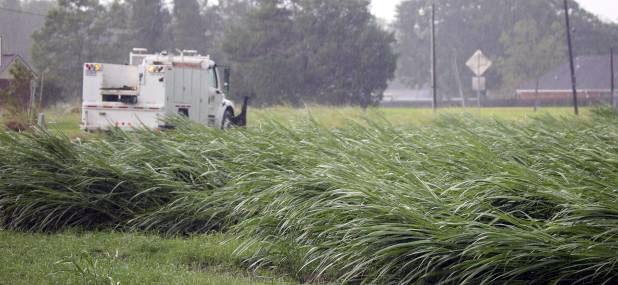
Weather can make cane vulnerable to disease
JEANERETTE — This winter’s mild weather could be setting up the next sugar cane crop for diseases, an LSU AgCenter plant pathologist warned at a meeting on Jan. 30 for cane growers in Iberia, St. Mary and Vermilion parishes.
Jeff Hoy, also resident coordinator of the AgCenter Sugar Research Station at St. Gabriel, said the freeze in November probably was not severe enough to control brown rust disease. “We’re probably tracking to another rust year,” he said.
The variety HoCP 96-540 is susceptible, but not as much as the variety L01-283, which is “the favorite of rust right now,” he said.
The fungicides Priaxor and Quilt XL can control brown rust.
Hoy said he is more concerned with brown stripe disease. The varieties most affected by brown stripe are L01-299, HoCP09-804 and HoCP04-838.
The disease thrives after mild winters in cane with low fertility. “Brown stripe likes stressed cane,” Hoy said.
No known control exists for brown stripe. “We’re kind of stumped on this,” he said.
He said it’s possible that using a starter fertilizer could control the disease.
Smut disease will continue to be a problem. The variety L01-299 is susceptible to the disease, but using healthy seed cane will prevent it from becoming a serious problem.
AgCenter sugar cane specialist Kenneth Gravois said the past sugarcane crop resulted in decreased tonnage, but sugar production per ton was similar to last year.
Conditions for planting and harvest were generally good, which should result in a better harvest next year, he said.
Jim Simon, general manager of the American Sugar Cane League, said efforts underway for tort reform in the state legislature could result in lower insurance premiums for cane trucks. He said the league is working with Louisiana Farm Bureau and the Louisiana Association for Business and Industry on that effort.
The league also is working with federal labor officials to make sure the sugarcane industry is able to get its H2A workers into the U.S. on time for the start of the 2020 harvest, Simon said.
AgCenter economist Mike Deliberto said it’s likely that foreign sugar will be allowed into the U.S. with an expected shortage this year. He said beet sugar production is down 11%, and sugar production from sugar cane has dropped by 10%.
The AgCenter has developed models to help farmers calculate a break-even analysis on their operations, he said.
AgCenter entomologist Blake Wilson said the spread of the Mexican rice borer has slowed. “I did see some fields in Vermilion Parish that were heavily infested,” he said.
The pest can be managed as effectively as the sugar cane borer. “I don’t think it’s going to be widespread like they see in the Rio Grande Valley,” he said.
The West Indian cane fly was a problem last year, but farmers addressed it early. “We did a better job of managing it than we did in previous outbreaks,” Wilson said.
Rich Johnson, an agronomist with the U.S. Department of Agriculture, said sugarcane is showing a positive response to adding sulphur to the soil. Often, he said, sulphur levels in the soil are low even if the nutrient has been added.
Sugar cane also is showing a positive response to adding boron to the soil. A 20-pound increase in sugar can be obtained from a ton of sugar cane when 1 to 1.5 pounds of boron per acre are added to the soil, he said.
Justin McNeal, of the Farm Service Agency, said Pointe Coupee Parish became the No. 1 sugar cane producing parish in Louisiana. “That was the first time that has actually happened,” he said.
